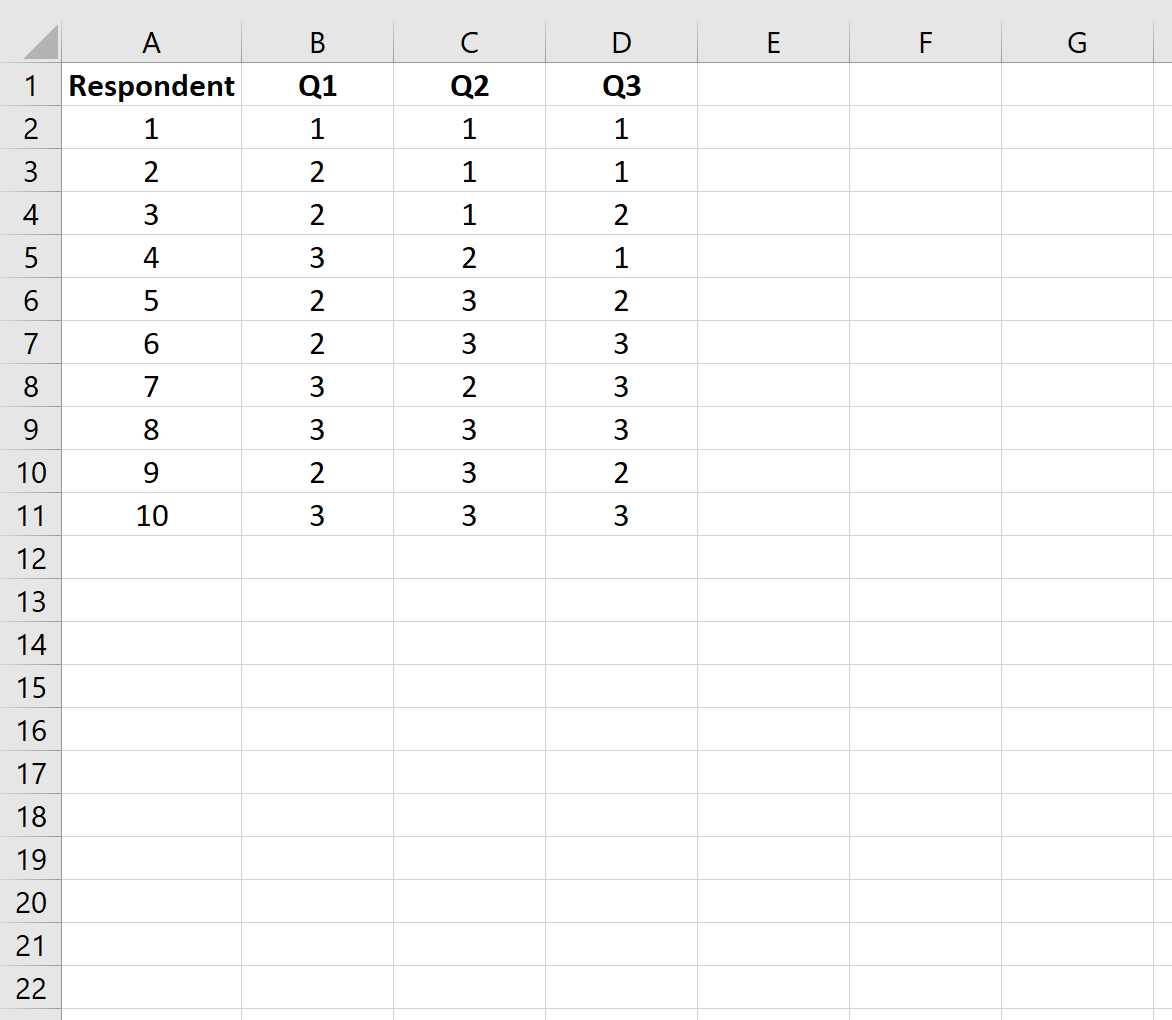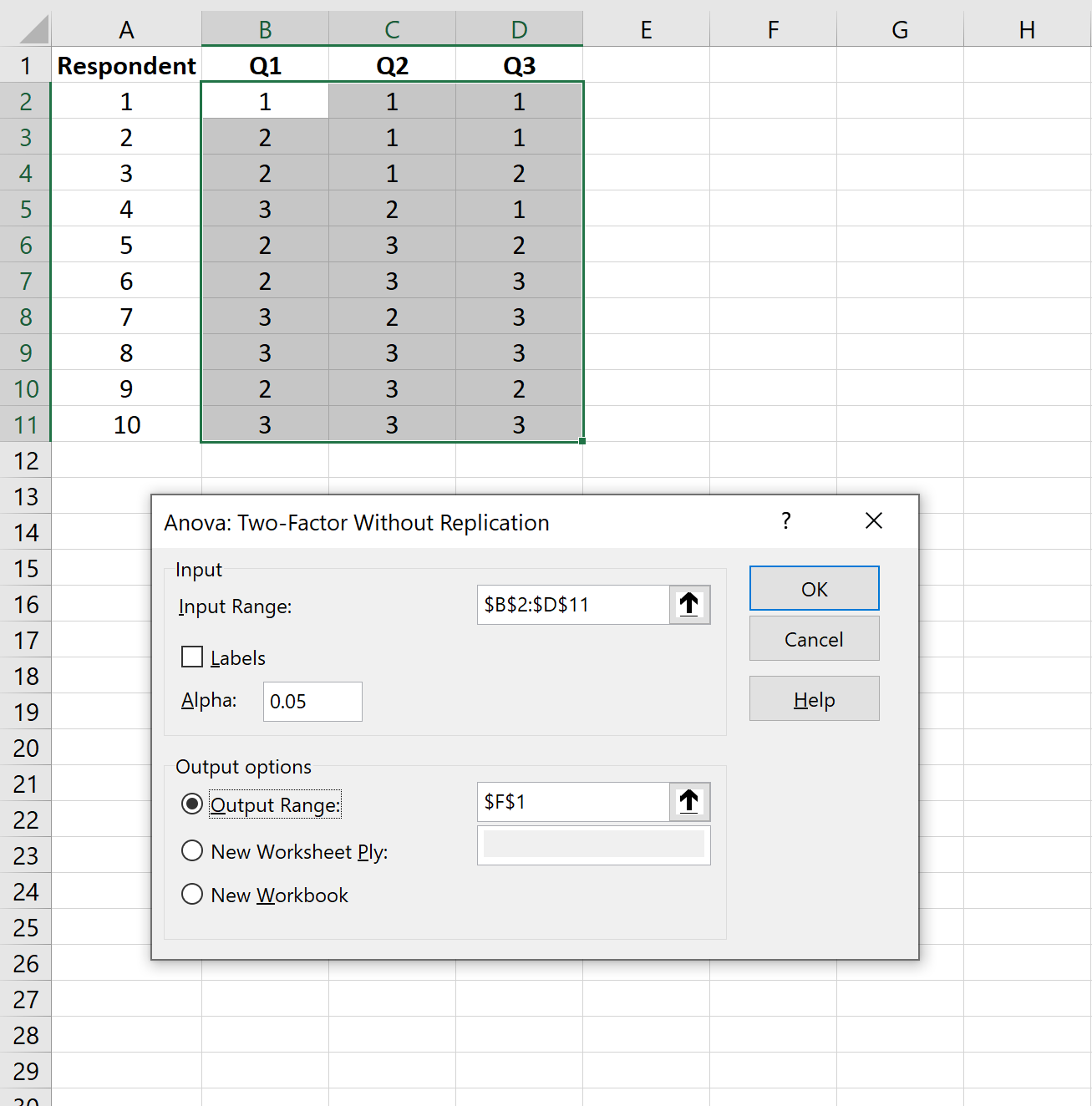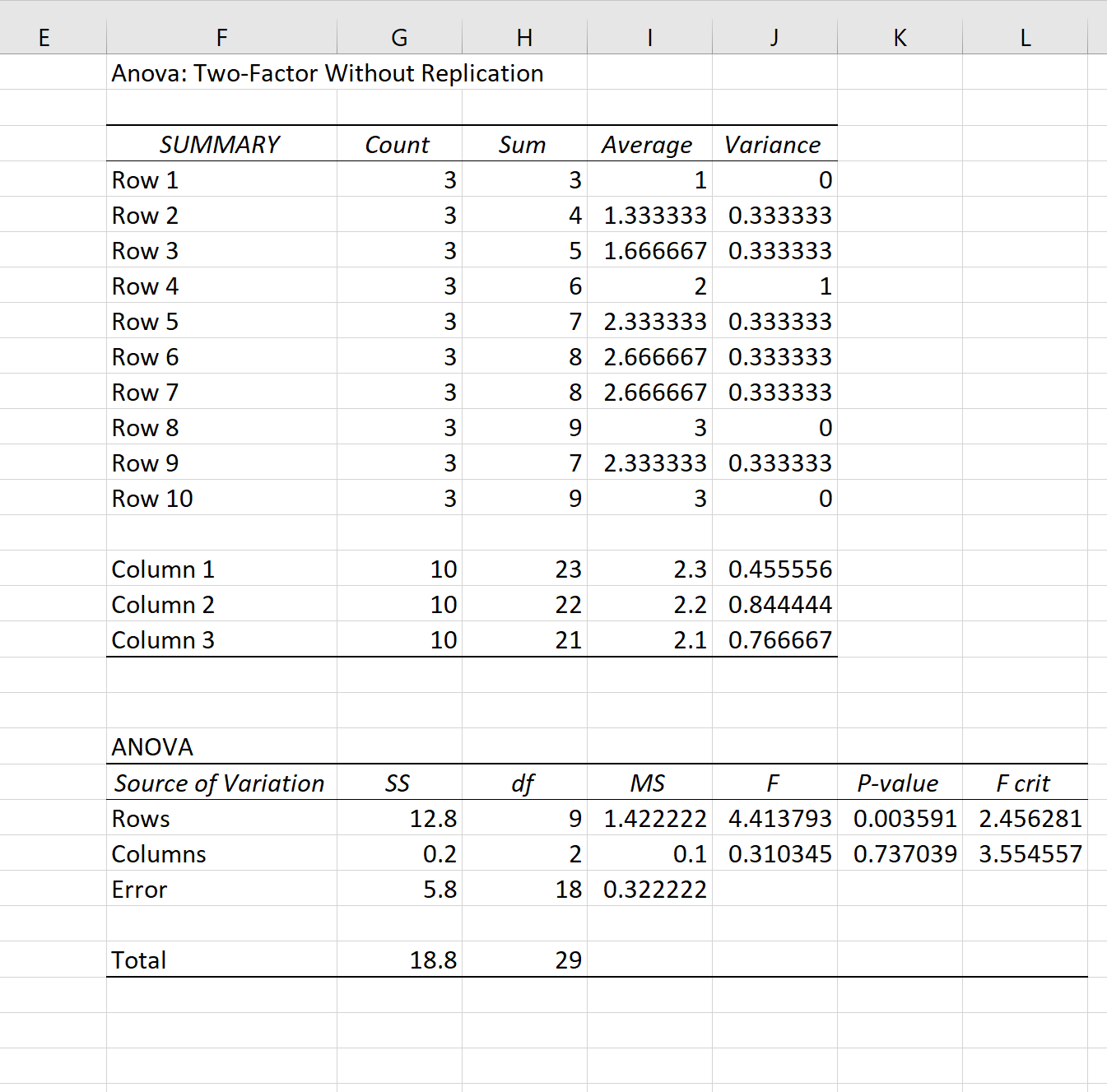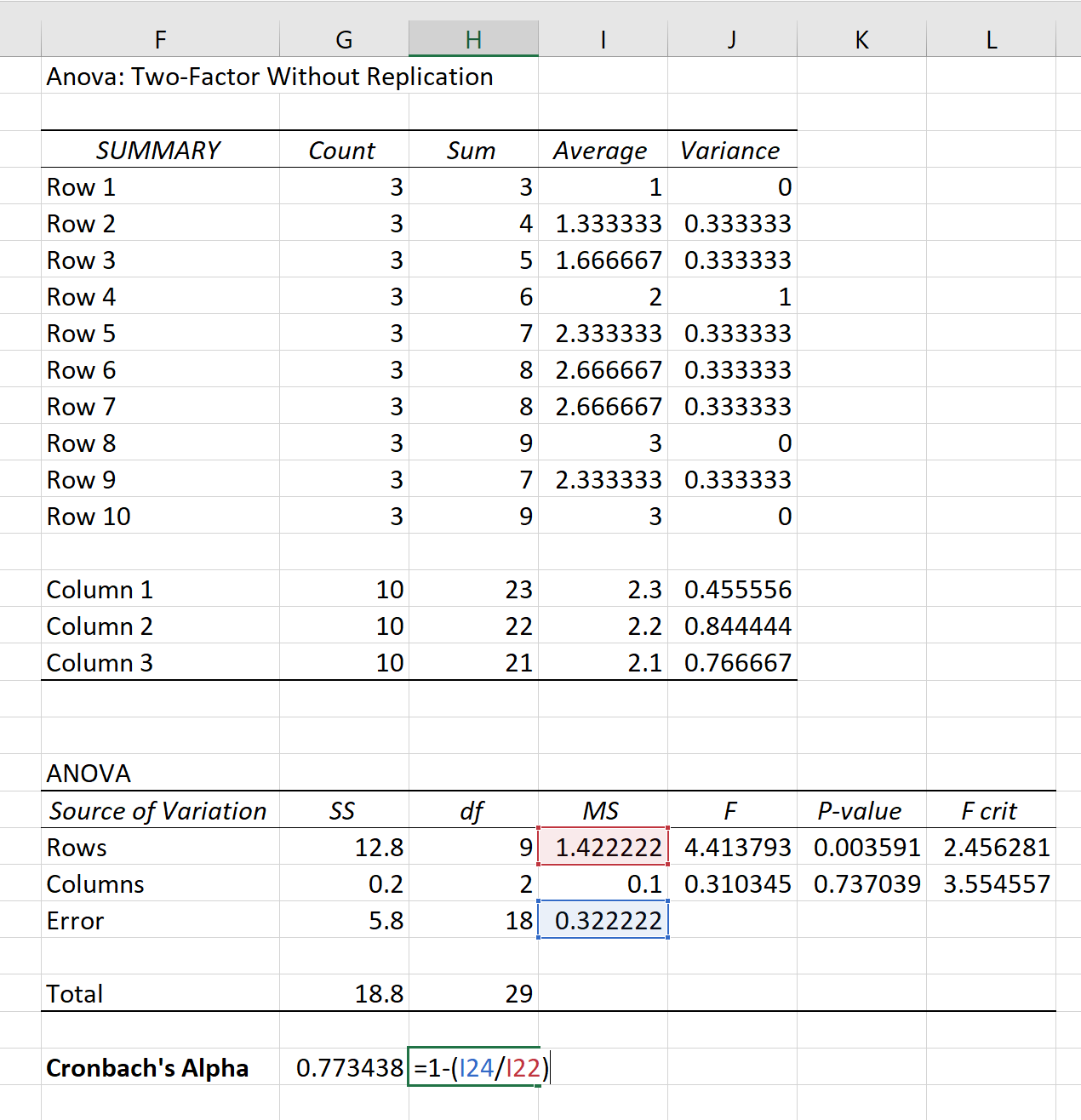Chronbach’s Alpha is a way to measure the internal consistency of a questionnaire or survey.
Cronbach’s Alpha ranges between 0 and 1, with higher values indicating that the survey or questionnaire is more reliable.
The following step-by-step example explains how to calculate Cronbach’s Alpha in Excel.
Step 1: Enter the Data
Suppose a restaurant manager wants to measure overall satisfaction among customers. She decides to send out a survey to 10 customers who can rate the restaurant on a scale of 1 to 3 for various categories.
First, let’s enter the data that contains the survey responses for each of the 10 customers:

Step 2: Perform a Two-Factor ANOVA Without Replication
Next, we’ll perform a two-way ANOVA without replication.
To do so, click the Data tab along the top ribbon and then click the Data Analysis option under the Analysis group:

If you don’t see this option available, you need to first load the Analysis ToolPak.
In the dropdown menu that appears, click Anova: Two-Factor Without Replication and then click OK. In the new window that appears, fill in the following information and then click OK:

The following results will appear:

Step 3: Calculate Cronbach’s Alpha
Next, we’ll use the following formula to calculate Cronbach’s Alpha:

Cronbach’s Alpha turns out to be 0.773.
The following table describes how different values of Cronbach’s Alpha are usually interpreted:
| Cronbach’s Alpha | Internal consistency |
|---|---|
| 0.9 ≤ α | Excellent |
| 0.8 ≤ α | Good |
| 0.7 ≤ α | Acceptable |
| 0.6 ≤ α | Questionable |
| 0.5 ≤ α | Poor |
| α | Unacceptable |
Since we calculated Cronbach’s Alpha to be 0.773, we would say that the internal consistency of this survey is “Acceptable.”
Bonus: Feel free to use this Cronbach’s Alpha Calculator to automatically find Cronbach’s Alpha for a given dataset.